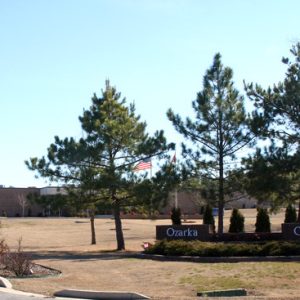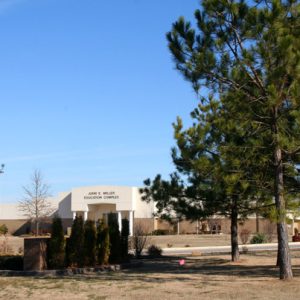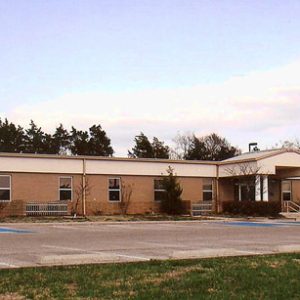calsfoundation@cals.org
Ozarka College
Ozarka College in Melbourne (Izard County) opened in the fall of 1975 as Ozarka Vocational Technical School to provide vocational training to residents of Fulton, Izard, Sharp, and Stone counties.
In 1973, the Arkansas Department of Education selected Melbourne as one of ten communities for vocational-technical schools. Under the leadership of the first director, Walter B. Hall, Ozarka offered classes in automotive service technology, food services, major appliance service, business education, building trades, industrial equipment technology, and licensed practical nursing (LPN). It also offered classes leading to the General Education Development (GED) diploma. The first class of forty-three students graduated in July 1976.
In its early years, Ozarka grew both in the physical plant and in enrollment. In 1978, the LPN program moved into a freestanding building. A business education building, later named for Hall, was constructed in 1986 and contained classrooms and a science lab. Hall retired in 1987, and Douglas Rush returned to his hometown of Melbourne as director of Ozarka after working for the state Department of Education and the Little Rock School District in Pulaski County.
The state legislature passed Act 1244 in July 1991, transforming Ozarka and several other vocational-technical schools into technical colleges. Besides the courses traditionally offered, these schools added courses for college credit under contracts with other state institutions of higher education. At that point, Rush’s title went from director to president.
In 1996, Ozarka Technical College became a fully accredited institution by the Commission on Institutions of Higher Education of the North Central Association of Colleges and Schools. Also that year, the largest building was constructed and named for state Representative John E. Miller of Melbourne. The John E. Miller Educational Complex contains an 800-seat auditorium, a lecture hall, an industry training room, classrooms, a boardroom, and faculty offices. A 1999 addition increased office and classroom space.
Another name change was made in 1999, eliminating the word “technical” to emphasize the school’s full range of degree programs. In 2001, construction was completed on a building to house nursing and adult education, named the Fred N. Blankenship Allied Health Building and the Wyth Duke Adult Education Building.
To provide courses to students throughout the four-county region, Ozarka College opened off-campus educational centers in Mountain View (Stone County) in 1997 and Ash Flat (Sharp and Fulton counties) in 2001. Distance learning was added via online, compressed video, and telecourse. Permanent facilities were opened in 2005 in Mountain View and Ash Flat to allow students in those areas to take general education courses. In 2010, the college opened another satellite site in Mammoth Spring (Fulton County). In January 2015, the school’s new student services center opened.
Ozarka College offers associate of arts degrees in teaching, along with associate of applied science and technical certificates in automotive service technology, business technology, culinary arts and hospitality, general technology, health information management, information science technology, licensed practical nursing, and registered nursing for LPN graduates. Ozarka also offers adult education and non-credit courses through the Continuing Education and Business and Industry Training Department. In August 2015, the Federal Aviation Administration approved a professional pilot program at Ozarka; the first aviation students in the Associate of Science in Professional Pilot-Aviation program started in fall 2015. In 2018, the college bought a nearby apartment complex with the goal of turning it into student housing. Enrollment in fall 2021 was 1,014.
For additional information:
Ozarka College. http://www.ozarka.edu (accessed June 15, 2023).
Kim Whitten
Ozarka College
 Education, Higher
Education, Higher Ozarka College
Ozarka College  Ozarka College
Ozarka College  Ozarka College
Ozarka College 




Comments
No comments on this entry yet.